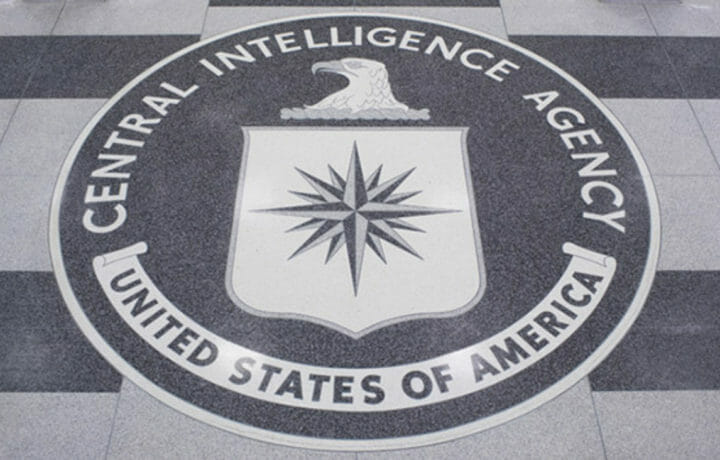The satellite’s nickname was “Big Bird,” and it was formally known as the KH-11. The surveillance satellite was one of a kind, developed in secret to provide visual surveillance for the U.S. intelligence community. The KH-11 reportedly could capture a one-foot-by-one foot square from an altitude of 100 miles, the ultimate “spy satellite.” The first of the KH-11 series of satellites launched on December 19, 1976 from Vandenberg AFB aboard a Titan III.
In March 1977, William Peter Kampiles, began his stint as a GS-7, junior watch officer in the CIA’s operations center. The duties assigned to the employee, then 23-years of age, were to monitor the routing and distribution of classified incoming and outgoing correspondence (cables, reports, etc.). In 1977, the operations center hosted approximately 65 employees, and Kampiles was among the most junior. His salary in 1977 was $11,523 per year.
The pneumatic tubes of CIA
Message traffic within the CIA Headquarters at this time was largely a manual affair. Cables were received, copies printed, and then the ops center would collate the right number of copies to match the expected distribution. Computers were on the way, but they hadn’t arrived just yet. The CIA used the famous (or infamous) pneumatic tube message distribution system for high-speed coordination system within the Original Headquarters Building (there were over 30 miles of 4-inch tube in the building). The operations center to which Kampiles was assigned was the hub for the distribution of paper to the various offices within CIA Headquarters. The operations center also housed cabinets of manuals, some of which were Top Secret, which might be needed in an emergency.
Kampiles – I’ll show you
Kampiles, a college grad, fluent in Greek, found the work mundane and boring. His first performance review after six months wasn’t stellar. This didn’t help him in his quest to become an operations officer. Indeed, it wasn’t long before he realized his goal would not become a reality. With the ops officer door closed, Kampiles decided to resign from the Agency.
But he wasn’t done yet, before he resigned in November 1977, he secreted out of the building “Copy 155” of the KH-11 manual within his coat. His subterfuge no doubt was to be certain that it would not be discovered by a random bag/package check at the building exits, designed to thwart employees from taking classified material out of the building in an unapproved manner.
Kampiles – Secret Squirrel intrigue
He then traveled to Greece on February 19, 1978 for a “vacation” where he took with him the KH-11 manual.
In late February, he walked into the Soviet Embassy and volunteered to be a source within the CIA for the Russians.
He was told to come back the next day. When he returned, he was met by Michael Zavali, a military attaché and GRU intelligence officer.
Over the course of four meetings, all of which occurred in Athens with the GRU, he provided to Zavali the KH-11 manual, received some perfunctory operational training on signal sites and meeting methodology and given tasking. He had demanded $10,000 for the manual, but in the end, he accepted $3000, and the offer of a long-term engagement as a source for the GRU. Exactly what Kampiles was hoping would happen – he was on his way to completing his “Secret Squirrel” scenario.
Kampiles a “Double Agent.”
Kampiles returned to the Chicago area on March 5, 1978, and noodled how to reach into the CIA, as their new “double agent.”
In the late-spring / early-summer of 1978, Kampiles, wrote to a CIA friend, George Joannides and described how he had conned the Soviets out of $3,000 while in Greece. Joannides did not immediately report receipt of the letter. In late-July, he “remembered” the letter and turned it over to the Soviet Section of the CIA. The FBI was contacted, and Kampiles was invited by Joannides to travel, on CIA’s nickel to Washington D.C. for an interview on August 14, 1978.
Over the course of the next few days, Kampiles was interviewed by a joint FBI/CIA team during which he confessed and shared how his motives were for the country. Kampiles saw himself as the ultimate “double agent” – a patriot. The interviews concluded, and he was allowed to return to the Chicago area on August 16.
Kampiles the convict
On August 17, Kampiles was arrested in Munster, IN and charged with six counts of espionage. His November 1978 trial lasted but two weeks. Both the defense and prosecution agreed – Kampiles’ motivation for meeting with the Russians was “he hoped that after making contact, the CIA would be more likely to hire him as a double agent.” He saw the sale of the KH-11 manual as a means to his desired end.
The jury found Kampiles guilty on November 17, 1978, and he was sentenced to 40 years in prison.
William Kampiles was released from the federal prison in Rochester, MN on December 16, 1996, just before his 42nd birthday.




